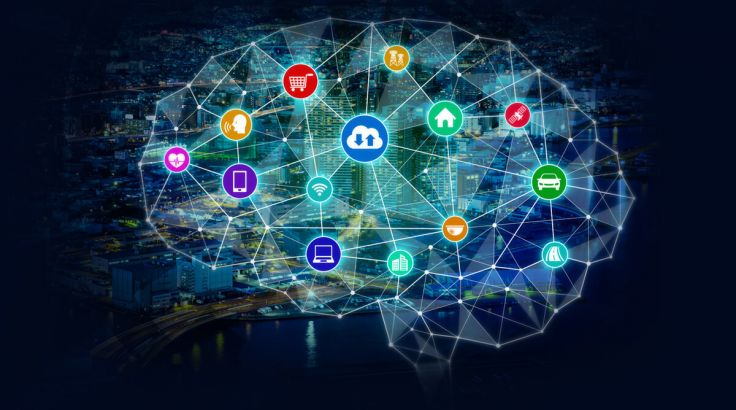As we move further into the 21st century, technological advancements continue to shape and transform various industries. Among these advancements, connectivity technologies, spatial computing, and synthetic data are emerging as critical areas of focus in technology transfer. These trends are driving innovation, enhancing capabilities, and creating new opportunities across multiple sectors.
Connectivity Technologies
Connectivity technologies are revolutionizing the way we communicate and access information. Innovations such as reconfigurable intelligent surfaces (RIS) and high altitude platform stations (HAPS) are at the forefront of this transformation.
Reconfigurable Intelligent Surfaces (RIS)
RIS technology involves the use of surfaces embedded with tiny antennas that can manipulate electromagnetic waves. This allows for improved wireless communication by enhancing signal strength and coverage. By reflecting and directing signals, RIS can mitigate obstacles and interference, ensuring more reliable connectivity.
One of the significant advantages of RIS is its potential to enhance connectivity in urban environments, where buildings and other structures can obstruct signals. Additionally, RIS can improve network performance in crowded areas, such as stadiums and shopping malls, by optimizing signal distribution.
High Altitude Platform Stations (HAPS)
HAPS are unmanned aerial platforms, typically located in the stratosphere, that provide wireless communication services. These platforms can cover large areas, offering an alternative to traditional ground-based infrastructure. HAPS are particularly useful in providing internet access to remote and underserved regions, bridging the digital divide and promoting digital inclusion.
Moreover, HAPS can support emergency response efforts by establishing communication networks in disaster-affected areas where ground infrastructure may be damaged or non-existent. This capability is crucial for coordinating rescue operations and delivering aid effectively.
Spatial Computing and the Industrial Metaverse
Spatial computing is an umbrella term that encompasses technologies like augmented reality (AR), virtual reality (VR), and mixed reality (MR). These technologies enable the creation of immersive and interactive digital environments that replicate real-life processes and scenarios.
The Industrial Metaverse
The industrial metaverse refers to the integration of spatial computing technologies into industrial applications. By leveraging data and artificial intelligence (AI), businesses can create digital twins of physical assets and processes. These digital twins enable real-time monitoring, simulation, and optimization, leading to improved efficiency and productivity.
For instance, in manufacturing, the industrial metaverse allows companies to simulate production lines, identify bottlenecks, and test different configurations before implementing changes in the physical world. This reduces downtime and minimizes the risk of costly errors.
In construction, spatial computing can enhance project planning and collaboration. Architects and engineers can visualize and interact with 3D models of buildings, making it easier to identify design flaws and make adjustments early in the planning process.
Synthetic Data
Synthetic data is an emerging technology that involves generating artificial data sets that mimic real-world data. This technology is gaining traction as a privacy-enhancing solution, allowing scientists and researchers to share data without compromising individual privacy.
Applications of Synthetic Data
One of the primary applications of synthetic data is in collaborative research across fields such as biology, health, and finance. Researchers can use synthetic data to develop and test algorithms, models, and hypotheses without the risk of exposing sensitive information.
In healthcare, synthetic data can be used to train machine learning models for diagnosing diseases, predicting patient outcomes, and personalizing treatment plans. By providing high-quality data that is free from privacy concerns, synthetic data accelerates the development of innovative healthcare solutions.
In finance, synthetic data can be used to simulate market conditions, test trading strategies, and develop risk management tools. This allows financial institutions to innovate and improve their services while maintaining compliance with privacy regulations.
Advantages of Synthetic Data
Synthetic data offers several advantages over traditional data. First, it addresses the challenges of data scarcity by generating large volumes of data quickly and cost-effectively. This is particularly useful in scenarios where real-world data is limited or expensive to obtain.
Second, synthetic data enhances privacy and security by eliminating the risk of re-identification. Since synthetic data does not contain any real personal information, it can be freely shared and analyzed without compromising privacy.
Lastly, synthetic data can be tailored to specific needs and requirements. Researchers can generate data sets that match the characteristics and distributions of real-world data, ensuring that their models and algorithms are robust and accurate.
Conclusion
Connectivity technologies, spatial computing, and synthetic data are transforming industries and driving innovation in technology transfer. Reconfigurable intelligent surfaces and high altitude platform stations are enhancing wireless communication capabilities and expanding internet access to remote areas. Spatial computing and the industrial metaverse are revolutionizing industrial processes by enabling real-time monitoring, simulation, and optimization. Synthetic data is providing a privacy-enhancing solution for collaborative research and innovation.
As these technologies continue to evolve, they offer immense potential for improving efficiency, productivity, and inclusivity across various sectors. By embracing these trends, businesses and researchers can harness the power of connectivity, spatial computing, and synthetic data to drive progress and create a more connected and innovative future.



